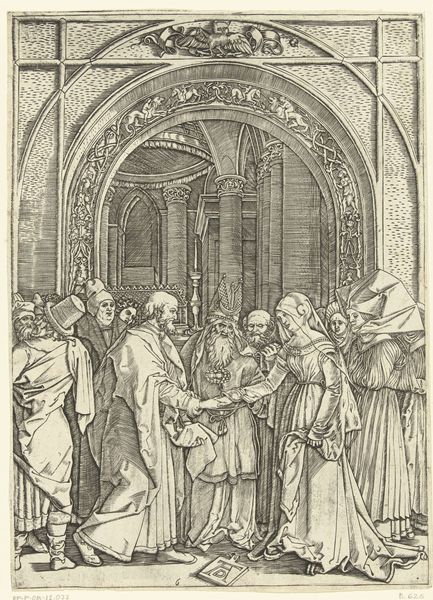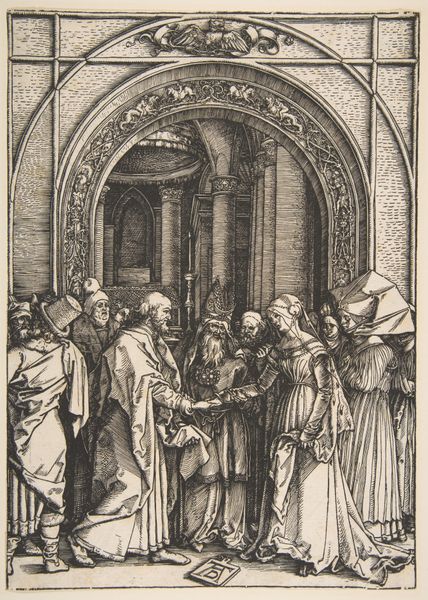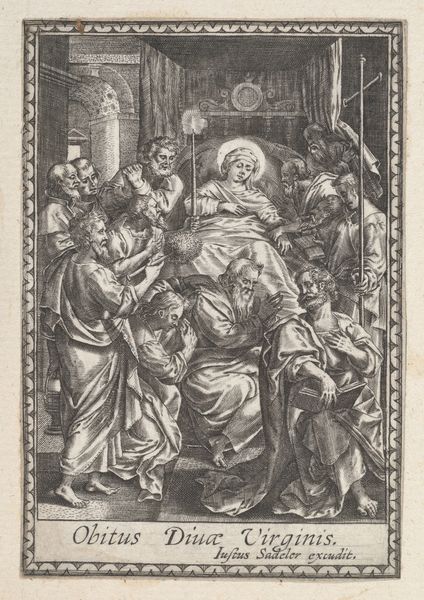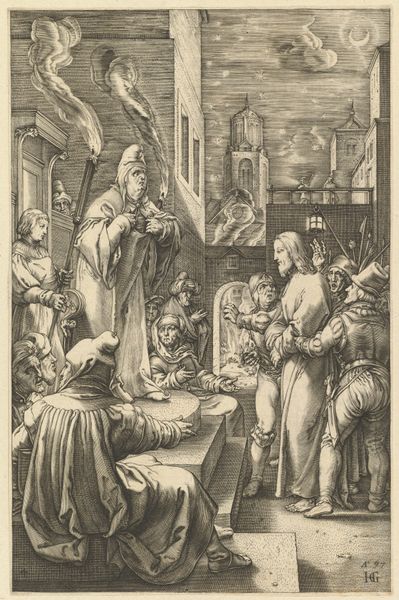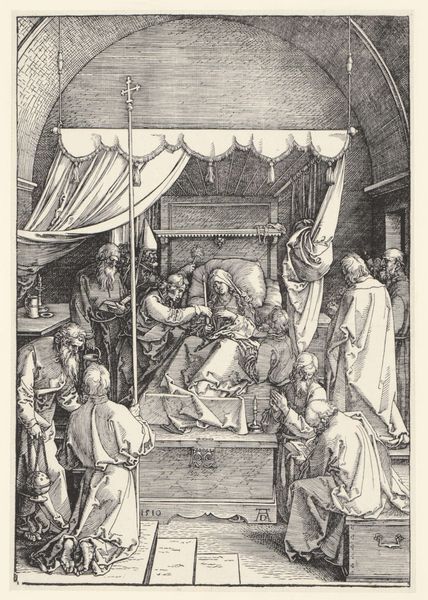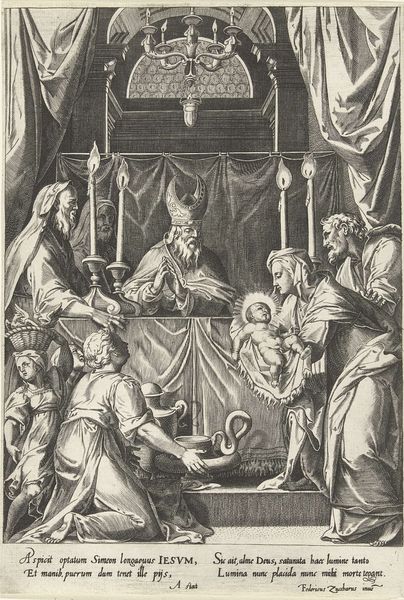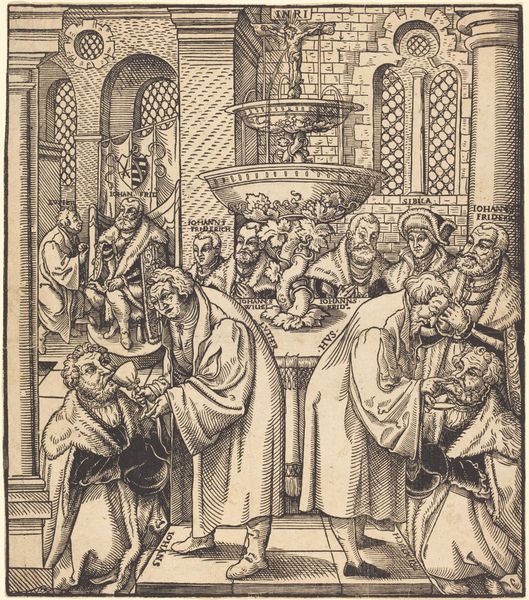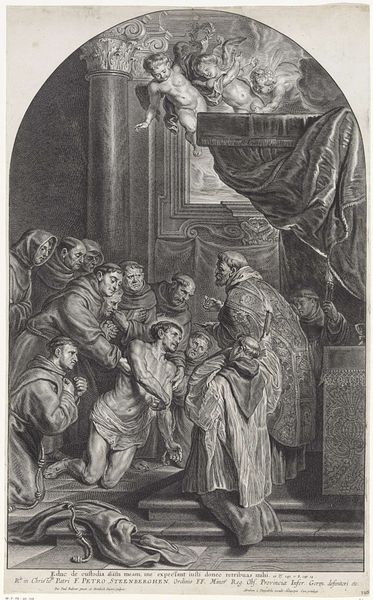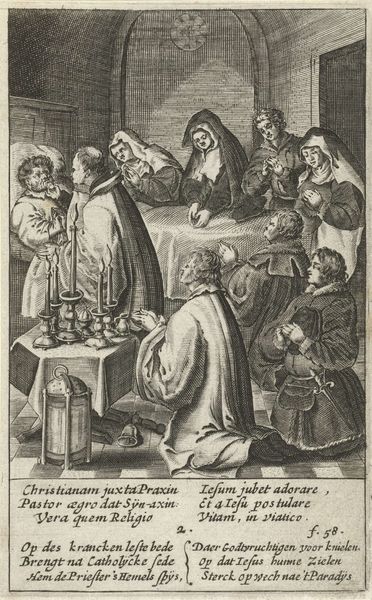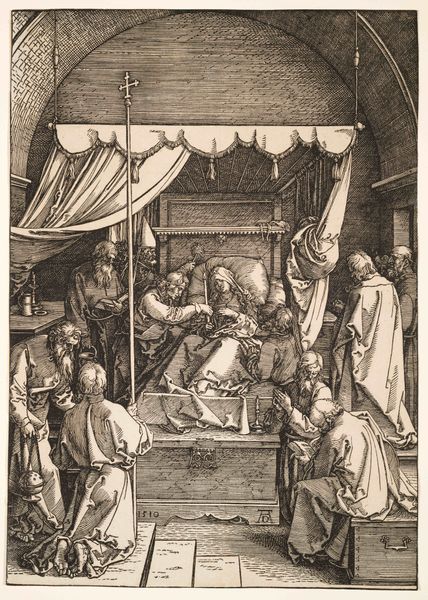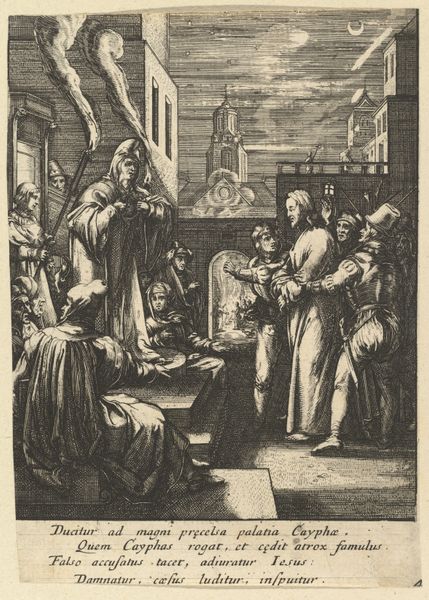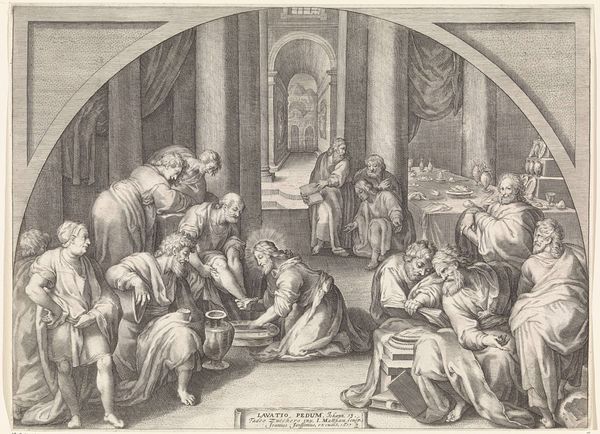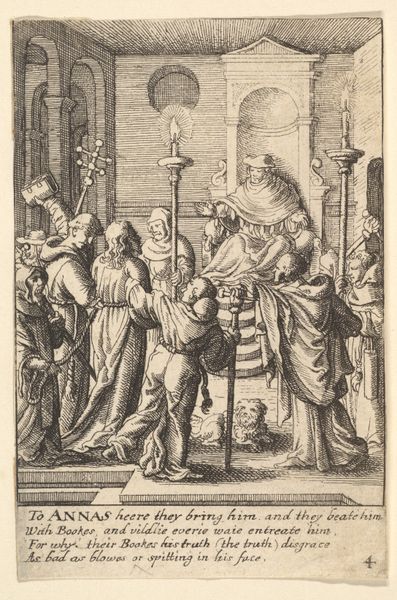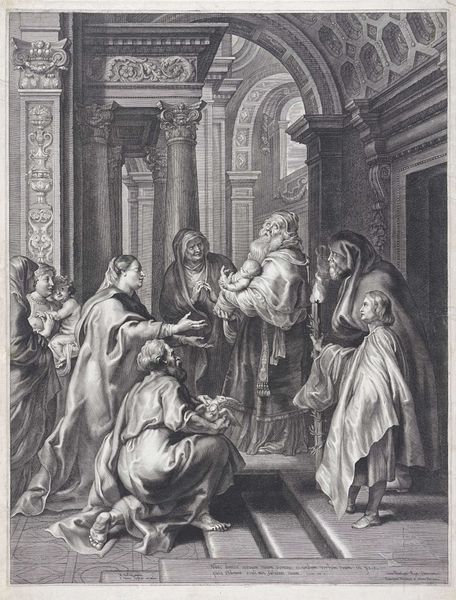
print, engraving
#
pen drawing
# print
#
pen illustration
#
pen sketch
#
figuration
#
11_renaissance
#
line
#
history-painting
#
northern-renaissance
#
engraving
Dimensions: width 115 mm, height 168 mm
Copyright: Rijks Museum: Open Domain
Editor: This is "The Circumcision of Christ," an engraving by Abraham de Bruyn from 1571. It feels very formal and ritualistic, even a little unsettling. What do you see in this piece? Curator: It's fascinating how de Bruyn uses line to convey both the drama and the ingrained patriarchal structures within this biblical scene. Consider how the figures are arranged: predominantly male figures surrounding the infant Jesus, performing a ritual that marks his entry into a specific religious and social order. Editor: That's true, the composition really emphasizes the male gaze and the exclusion of women from the central act. Curator: Exactly. The female figures are present, but positioned on the periphery. This isn't just a depiction of a religious event; it's a visual representation of power dynamics and the construction of identity. Think about the implications of circumcision within its historical context. It's a physical marking that signifies belonging and adherence to a specific covenant, reinforcing religious and cultural norms. Editor: So you're saying it's about more than just a religious ceremony, but about societal control? Curator: Precisely. And think about the artist's choice of engraving – a medium that allows for precise replication and dissemination of this image. De Bruyn isn't just creating a work of art; he's participating in the spread of a particular ideology. The scene could spark conversations around bodily autonomy, religious freedom, and the legacy of historical power structures embedded in contemporary society. Editor: That adds a whole new layer to my understanding. I initially saw a historical depiction, but now I recognize its complex commentary on gender, power, and cultural identity. Curator: That’s the power of art, isn't it? It reflects, reinforces, and, at times, challenges the status quo.
Comments
No comments
Be the first to comment and join the conversation on the ultimate creative platform.
